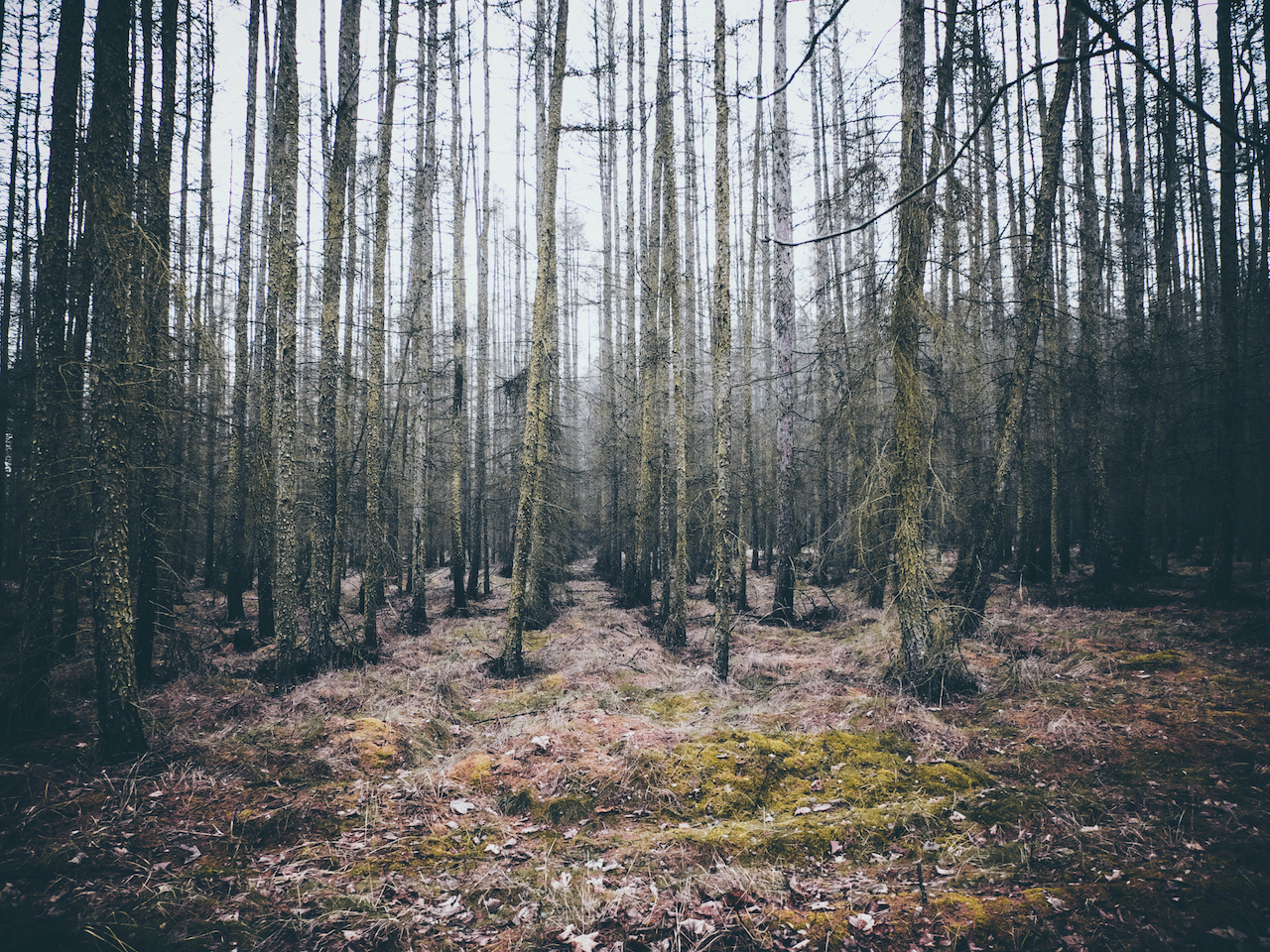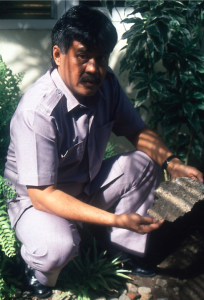Apr 18, 2017 / by Nancy Cruz / In Socio eco-cultural, Vince Deschamps
The Ecology of Natural Capital – “Eco-logical” choices for valuation

I was watching the news the other morning, and it was being reported that two “priceless” Van Gogh paintings, valued at about $72 million, had been recovered and were finally being put back on display in Amsterdam((http://globalnews.ca/news/3324836/van-gogh-paintings-go-on-display-14-years-after-being-stolen-by-the-mafia/)). I thought this was great news but hey, wait a minute…
As I chortled to myself at the contradiction being made, I realized how ingrained the concept of monetary value is in our society. We have to get away from this type of thinking – if something is truly priceless, then that’s what it is…and quite often there is no apparent logic in assigning a price to it.
As stated in last month’s blog, I feel the same way when it comes to valuing some aspects of natural capital. However, I also think it is unfair not to suggest some means of assessing the ecological values of natural capital – ecologists cannot simply pooh-pooh the notion of economic valuation without providing some sort of reasonable alternative. There has to be a way to do it but, without the easily-quantifiable “currency” of money to rely upon, how would one measure ecological values?
First off, we need to determine which natural capital resources – and resultant ecosystem services – should be considered exempt from economic valuation. Ecological values emphasize the functionality and rarity of a natural capital resource; as such we should consider natural capital resources providing them as being:
“based on the biotic (i.e., living) or abiotic (i.e., physical) characteristics of the ecosystem service, which consider the ecological functions being provided, as well as the importance of the feature providing these functions on a given landscape”.((Source))
By limiting the assessment of ecosystem services provided by these resources to a given landscape (e.g., at a watershed level) a case could be made for considering up to ten of the seventeen ecosystem service categories described by Costanza et al (1997)((Costanza et al. 1997. The value of the world’s ecosystem services and natural capital. Nature 387, 253–260.)), including disturbance Regulation; Water Regulation; Water Supply; Erosion Control; Soil Formation; Nutrient Cycling; Waste Treatment; Pollination; Biological Control; and, Habitat & Refugia.
To further whittle this list down, and to make the exercise more grounded in ecology, I would suggest that we also filter out the ecosystem services for which assigning a price has no merit ecologically, and eliminate ecosystem services that provide direct benefits or services to people (i.e., consumptive services ((Note that Recreational and Cultural ecosystem services are omitted from this list, as they are considered “passive” consumptive services and will be discussed in my next blog.)) or services measured through the defensive expenditures approach((Which effectively calculates the cost to society of replacing the services provided by natural capital assets (TD Economics & Nature Conservancy of Canada. 2017. Putting a Value on the Ecosystem Services Provided by Forests in Canada: Case Studies on Natural Capital and Conservation. 37 pp.)) or that can’t be replaced by artificial means (e.g., grey or green infrastructure). This would result in a list of age-old ecological functions that provide benefits primarily to the natural environment – the Circle of Life – and which would probably carry on unimpeded if humans weren’t constantly meddling with them.
So, through this deductive process, natural capital resources that I would consider to be “priceless” (i.e., irreplaceable from an ecological standpoint and therefore exempt from economic valuation) would be those that provide the following ecosystem services: Pollination; Biological Control; and Habitat & Refugia. Here are a few examples of why I think this:
- Pollinators are the creatures that pollinate flowers, and there are over 1000 species of pollinating animals in Canada, including bees, wasps, flies, beetles, butterflies, moths and birds (but not bats). The 855 species of native bumblebees, mason bees, sweat bees, leafcutting bees, mining bees and squash bees, together with the introduced honeybee, perform over 70% of the total pollinating duties. Without the pollination services provided by these species, the flowers, trees and other plants that depend on these pollinators would not exist (not to mention that we’d have no food production). The natural habitats that support pollinators are priceless, as they facilitate the pollination of the wild plants that form the foundation of our native ecosystems.
- The Hudson Bay lowlands cover an area of about 325,000 km2 in northern Ontario, with about 90% of this area consisting of mostly peatlands that form the largest wetland in North America. In addition to providing globally-significant gas and climate regulation services, this area provides critical calving and wintering habitat – as well as travel corridors between them – for Woodland Caribou. On a smaller scale, the Hine’s Emerald is an extremely rare dragonfly whose only known population in Canada is in and around Minesing Swamp in Ontario (although it is also found in a few scattered sites in Wisconsin, Michigan, Illinois, and Missouri). These little guys have very precise habitat needs; they only live in groundwater-fed wetlands with grassy vegetation, and their larvae use crayfish burrows during periods of low water and during the winter. In both cases – and regardless of scale – the habitat & refugia functions provided by the Hudson Bay Lowlands and Minesing Swamp are critical to the overall requirements of the species they support and are therefore priceless to them.
- Way back in 1992/93, I ran a project to try and locate any remnant populations of Javan Tiger in and around Meru Betiri National Park in East Java, Indonesia. Our team used every method possible at the time: endless field surveys, camera-trapping and even consulting local mystics. Our efforts were rewarded with numerous hopeful (yet ultimately false) leads, lots of leopard tracks and many pics of prey and poachers, but not a trace of the tiger was found. The species has since been declared extinct due to the loss of habitat and persecution by humans. Not only was this species priceless because of its unique genetic makeup, but its extinction has resulted in an irreversible impact on the biological control functions (through maintaining the balance of predator-prey relationships) in the Javan ecosystem. All that remains are a few old grainy pictures and a plaster cast of the last known track…

A photo of the last known evidence of the Javan Tiger, March 1993. The gentleman in the picture is Mr. Tri Wibowo, Superintendent of Meru Betiri National Park.
After all this, my accountant colleagues will no doubt ask: how should we measure the ecological value of these “priceless” ecosystem services? In quantifiable terms, the currency that could be used may be as straightforward as the size of the natural capital resource providing the service (e.g., the area of Woodland Caribou habitat), a biodiversity index of the resource (e.g., the number of pollinator species), or any other scientifically-sound means of measurement. For the record, I don’t think that biodiversity is an ecosystem service, but it is a very useful means to measure of the complexity of an ecosystem – and therefore the relative health of it.
The point of all this is that even though there may not be a line-item for some ecosystem services on the balance sheet, or that valuing nature necessitates putting a price on it. What it does mean, especially to ecologists, is that some ecological values are equal to – and occasionally greater than – than economic values. In some instances, the ecological values may be considered more absolute, as they are critical, irreplaceable and some – just like a Van Gogh masterpiece – “priceless”.
Vince Deschamps is an ecologist and Registered Professional Planner with over twenty-five years of professional practice, including living and working in protected areas in rural and remote parts of the globe. Vince is at the forefront of developing Natural Capital and Ecosystem Service Assessment (NCESA) as a scientific discipline and has applied the approach in support of traditional land use systems and conservation initiatives in Indonesia, Barbados and Ontario’s Far North.
More information is available on Vince’s LinkedIn page: https://ca.linkedin.com/in/vince-deschamps-a713641a
You can also follow Vince on Twitter @VinceDeschamps
Vince can be reached by email at: vince.deschamps@sympatico.ca